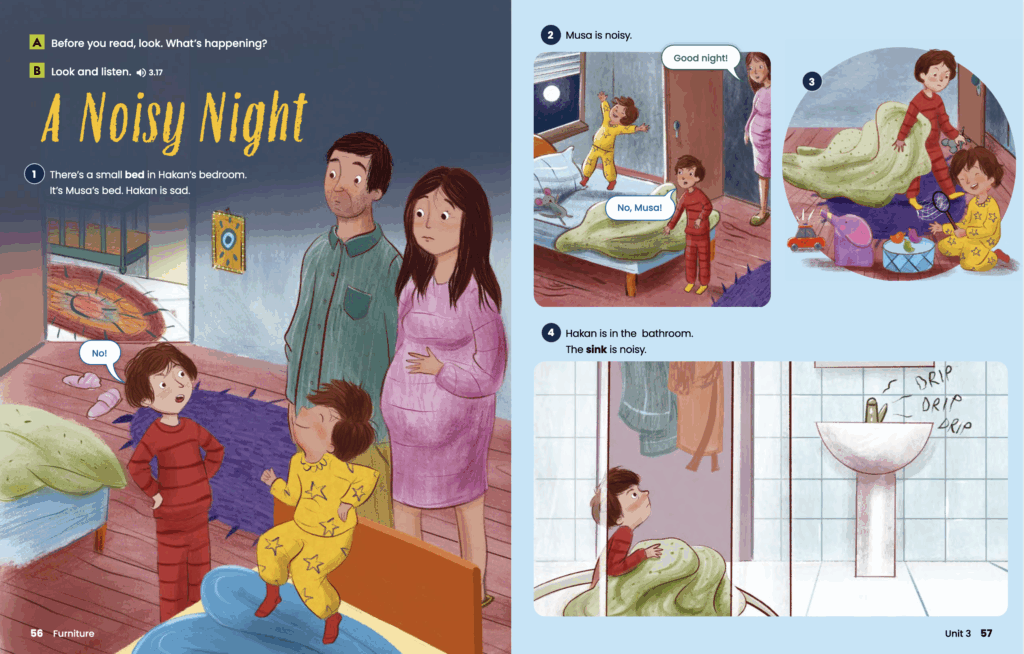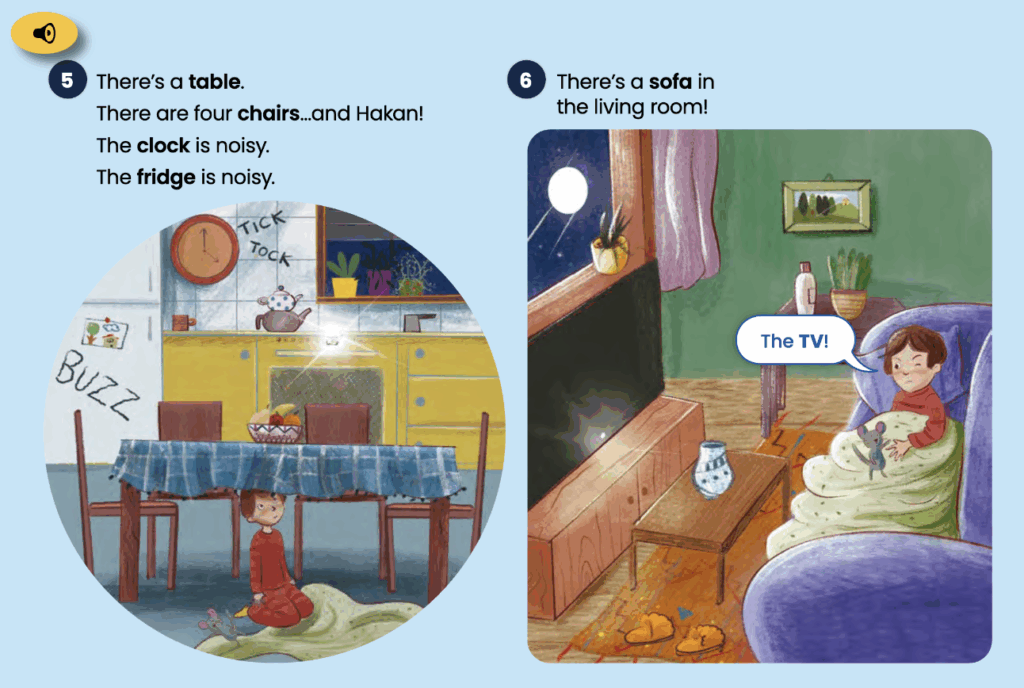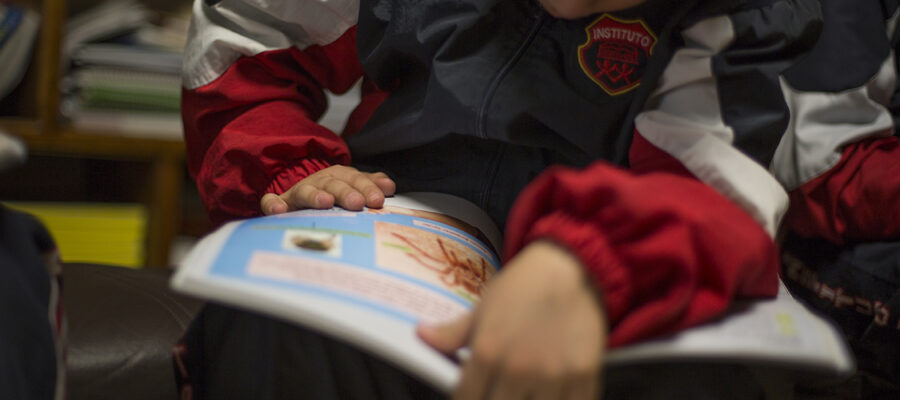Stories are powerful tools in the English language classroom. They help learners connect with characters, explore new ideas, and develop important language skills. But educators know that choosing the right story isn’t always easy.
We might ask ourselves:
- Is the story at the right level for my students?
- Can I integrate it into my lesson objectives?
- Is it engaging and age-appropriate?
- Do the illustrations support comprehension and discussion?
- Is there a clear story arc to explore character development?
- Can I use it to teach key language skills?
- Is it the right length for my class time?
- Are there teaching guides to support me?
But it’s not just about choosing the right story — it’s also about how we use the stories to build our learners’ language skills, support multiple literacies, and inspire critical thinking. Let’s look at a reading lesson from the Starter Level of our Trailblazer program to explore how we can take a story and bring it to life for young learners of English.
“A Noisy Night!”
Just the title sparks curiosity. Noisy! What does it mean? What’s making all the noise? Why? What’s happening? A string of questions. Ask young learners these questions and help them make a connection to their own lives: Have you ever had a noisy night?

An excerpt from a story in Trailblazer Starter level
Then come the visuals, the illustrations—two boys, a family, siblings, a cozy home. The story unfolds with a clear arc, relatable characters, and plenty of opportunities for discussion. We also learn that the topical vocabulary is tied to rooms and the furniture in a house. So, let’s follow Hakan through all the rooms and furniture he sees. What activities could you tie in with this?
As we read, we follow Hakan, who’s upset. What’s happening? Where does he go? What does he see? How does he feel?

An excerpt from a story in Trailblazer Starter level
After reading, a complete Teacher’s Guide supports literacy instruction. We find out from the Teacher’s Guide that the story is set in Türkiye, a country known for its amazing rugs. Suddenly, the illustrations take on new meaning. Can your students spot the colorful rugs in the story? What do they notice? This opens the door to cultural exploration and cross-curricular learning.
Stories like these are incredibly versatile, especially in mixed-ability classrooms. They allow every learner to engage at their own level, whether through vocabulary, storytelling, discussion, or creative expression.
If you’re new to Trailblazer, here are some important tips for bringing stories like this one into your English language classroom.
A few tips on teaching stories to young learners
When we’re designing a lesson that includes a story, it’s helpful to think about the different literacies we can help students develop. Here’s a brief guide to National Geographic Learning’s framework on Multiple Literacies. You can also download our position paper, ‘Multiple Literacies in the English Language Classroom’, to learn more about these five key literacies and why they’re important for young learners today.
Textual Literacy
- Identify key vocabulary (objects, rooms and furniture in the house).
- Discuss story structure: What happens in the beginning, middle, and end?
- Retell the story to build sequencing and story skills.
Visual Literacy
- Track how the character’s feelings change.
- Describe the places the character visits.
- Notice the details in the illustrations.
- Create a visual representation of the story.
Media Literacy
- Listen to the story audio and look for different sounds.
- Recreate the sounds in the story—make it interactive!
- Explore different formats: How else could this story be told?
Social Literacy
- Step into the character’s shoes – what would you do? Where would you go?
- Reflect: Have you ever felt like the main character in the story?
- Connection: Can students connect to their own experiences?
Global Literacy
- Is the story set in a different culture or country?
- Can we explore cultural elements (food, clothing, traditions?)
Fun ways to retell stories
If you want to get even more out of the story you’re teaching to your young learners, here are some fun ways to retell stories in class.
Story retell cards
Students pick 3-4 words from the story and write each on a card with a point value from 1-5. Shuffle the cards. In groups, students draw a card and make a sentence using that word. If correct, they earn the points. This turns retelling into a fun, manageable game!
Feelings timeline
Draw a timeline showing how the main character’s feelings change throughout the story. This helps students understand emotions and build social literacy. If you’re using Trailblazer, you can download the timeline from the Trailblazer teacher resources on the Spark platform!
Story fingers
Students trace their right hand and write first, second, then, next, finally on each finger. Students use this as a guide to summarize the story with transition words.
Mystery sort
Give students a set of mixed objects from the story (pictures or words). It could be rooms vs. furniture. Challenge them to think critically and solve the mystery by sorting them into the correct categories. Add a timer for extra excitement.
When we choose stories thoughtfully and build meaningful activities around these stories, we empower our young learners to think critically, express themselves creatively, and engage deeply with English. The next time you plan a reading lesson, remember that the right story can transform your English language classroom into a space where language comes alive.
What is Trailblazer?
Trailblazer is a 7-level language and literacy program for young learners that includes fictional and non-fictional texts and a critical thinking lesson in each unit. The fictional texts feature characters from around the world, with beautiful illustrations to captivate young learners. The non-fictional texts spark curiosity and connect learners to real-world topics and cross-curricular content.





